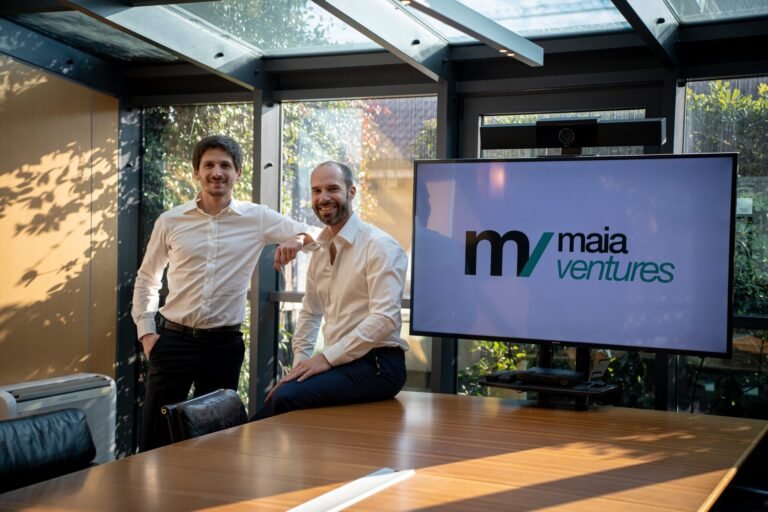Rob Ward is passionate about the entrepreneurial future of agrifoodtech. He invented and scaled the world’s first field-scale soilless strawberry system, pioneering the universal use of coir. He has held international leadership roles, including CEO at It’s Fresh Ltd and Agtech robotics firm Agaricus Robotics Ltd. Rob now advises agtech businesses and investors worldwide on market strategy, adoption, and growth.
The views expressed in this article are the author’s own and do not necessarily represent those of AgFunderNews.
“Agtech adoption fails not because of the technology…” That’s a provocative claim, but one I’ve come to believe after three decades in commercial farming, invention, business building and exiting, and advising agtech founders across the globe.
The hard truth: most failures can be traced back to how a new technology is introduced to the market, not to what the technology does. With so much talent, money, and technical progress in agtech, why do so many solutions fail to scale?
The answer: accidental “challenger brand” thinking, and the absence of what I call a Minimum Viable Ecosystem (MVE).
Why good tech fails
The wave of noise is arguing that agtech is unsuitable for venture capital—too slow, too conservative, too complex. LinkedIn is littered with posts on this theme. I disagree.
The real problem lies in a fundamental misunderstanding of market dynamics and adoption strategies and it’s relatively straightforward to fix.
The key characteristics of agtech—high regulation, reliance on scientific evidence, and deeply entrenched supply chains—are not unique. Healthtech, for example, is equally complex, but no one suggests it’s unsuitable for VC funding. Healthtech succeeds because its most impactful innovations are launched as part of an ecosystem, not in isolation.
Agtech’s adoption issues are not due to rejection by farmers or even poor investor fit. The crux of the problem lies in how new technologies are introduced: too often as challenger brands, hoping to compete alone against an established and interconnected system.
The human side of adoption: Our needs and ecosystems
Every sector, agriculture included, relies on a web of human relationships. When you peel back all businesses, you find the same fundamentals: the six human needs—certainty, variety, significance, connection, growth, and contribution. For an innovation to thrive, it must enable and sustain these needs for all stakeholders in the value chain.
A market where these needs are met and value flows between participants is a viable ecosystem. Without this, even the best technology will remain an outlier.
Challenger vs. disruptor strategy: The fatal confusion
This is where many agtech companies go wrong. While they aspire to be disruptors—they launch accidentally like challengers: isolated, competing with the incumbent but failing to connect with the broader ecosystem.
A challenger brand strategy relies on winning farmers one by one. The disruptor brand strategy aims to reconfigure the entire chain so that each player—supplier, agronomist, and retailer—benefits from the new status quo.
But, as the saying goes, “turkeys don’t vote for Christmas.” A new technology that threatens to upend margins or roles within the supply chain will face coordinated resistance, no matter how compelling it appears to the end user.
This is why many truly innovative solutions are marginalized or stall after a few pilots, resulting in over-extended launch timelines – with disappointment and disillusionment among investors.
The price inversion trap
A typical point of friction is “price inversion”—when new technology proposes a massive shift, dramatically reducing the value captured by current players. For example, a novel system may reduce input costs or displace chemical usage, shrinking the addressable market for established suppliers.
The incumbents fight back, not out of spite, but because it threatens their economic foundation. If your solution requires supply chain partners to forgo revenue voluntarily, without a viable alternative, you’re facing an uphill battle.
My lesson: Building a Minimum Viable Ecosystem (MVE)
I learned this the hard way as a commercial strawberry farmer in the UK. In the 1990s, most main season strawberries in the UK were grown in soil. Growing strawberries in soil faced multiple issues, including controlling soil pathogens, labor headaches, and environmental problems.
As a farmer, I believed soil systems needed to change. This change needed to be dramatic, but not by simply introducing a new product. I needed to create a new ecosystem, but disruption like this only happens when all participants benefit, not just me as a grower.
First, I replaced unsustainable peat with coir, a renewable medium, and overcame skepticism from agronomists and resistance from input suppliers. Next, I developed a completely new, reusable growing container to fix the costly growbag alternative. After that, I had to align my solution with irrigation and polytunnel providers to ensure compatibility with the existing irrigation systems.
Then I needed buy-in from supermarkets, demonstrating that my approach produced better quality fruit with fewer chemicals.
I didn’t call it an “MVE” at the time—however, creating this MVE was just common sense. It was only by weaving these mission-critical relationships with key supply chain actors and creating sufficient collective benefit that the model scaled.
Today, 99% of UK strawberries are grown this way, and the industry’s farm gate value and volume has tripled.
What is a Minimum Viable Ecosystem?
The MVE is the smallest set of partners, collaborators, and influencers you need to validate and support your new model. It is not enough to have “product-market fit” in isolation. You need ecosystem-market fit.
– Who must be at the table for your model to work?
– Whose endorsement or collaboration unlocks further adoption?
– Which partners benefit, not just tolerate, the change you propose?
A strong MVE ensures the value proposition extends across the chain, creating a growth spiral, rather than a zero-sum battle.
How to build an MVE: A playbook
- Map and engage pivotal partners
Start with a value chain mapping exercise. Identify the 3–5 critical nodes (e.g., input suppliers, distributors, large-scale farms, co-ops, key influencers). Run pilots or workshops co-sponsored with these leaders, focusing on shared KPIs and co-created value.
- Align business models to overcome value inversion
Work directly with supply chain partners to develop business models that share benefits: revenue share, cost savings, and expanded market access. Draft “Partner Value Charters” that formalize each player’s new role and reward.
- Overcome ecosystem resistance
Start with a champion partner whose credibility can reduce risk for others. Build a pre-competitive consortium that shares both risks and learnings openly. Publicize early wins (e.g., yield increases, cost reductions) to attract more followers.
From insight to industry-ready MVE innovation
This approach isn’t just theory—it’s due diligence. Investors and corporates should ask:
– Has the startup mapped its supply chain and engaged pivotal partners?
– Is there a clear path to value alignment (not value destruction)?
– Are there champions or evidence of ecosystem traction?
The most successful agtech disruptors will be those who move beyond being a challenger—those who build a robust Minimum Viable Ecosystem, enabling a network of partners to profit and thrive.
Summary
The real challenge in agrifoodtech adoption isn’t a lack of innovation—it’s the absence of ecosystem architecture. Success depends on a Minimum Viable Ecosystem approach: designing for adoption, collaboration, and mutual benefit, not just technological superiority.
Innovators who map the value chain, engage partners, and engineer for ecosystem- market fit will spark the next real growth spiral in agtech.
The post Guest article: Why agtech adoption fails… and how a Minimum Viable Ecosystem (MVE) can fix it appeared first on AgFunderNews.




